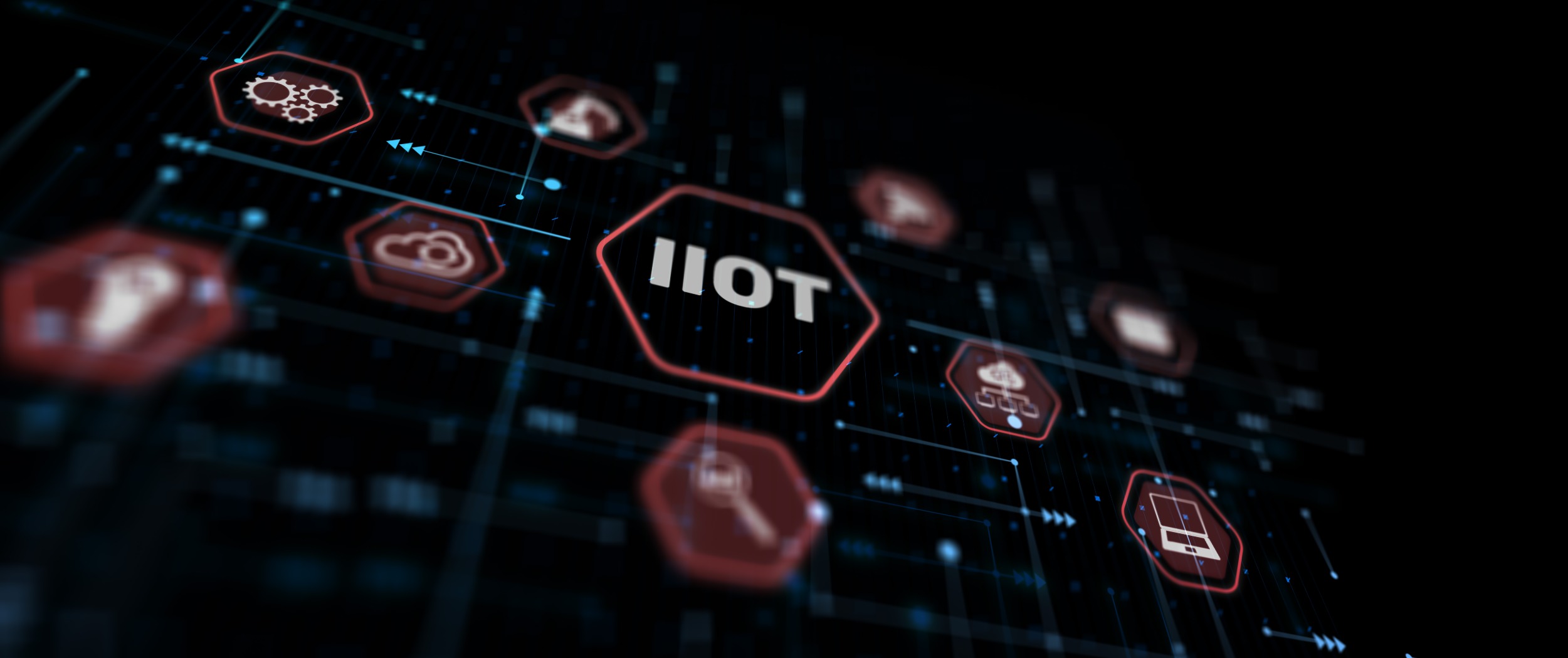
Overcoming IIoT Device Management Challenges in Utilities with Lightweight M2M 2.0
By:
OMA
|
2025-October-9
The utilities sector faces a pivotal moment in its digital transformation journey. Increasingly, the industry relies on Industrial Internet of Things (IIoT) devices—smart meters, remote monitoring sensors, field automation systems, and predictive maintenance equipment—to modernize operations and provide resilient, scalable services. Yet many challenges persist in device and data management: high operational costs, complex device lifecycles, vendor lock-in, and ever-tightening security requirements.
Lightweight M2M (LwM2M) 2.0, a device management standard from the Open Mobile Alliance (OMA) slated for release in Q1 2026, offers an enhanced standardized way for utilities to overcome these hurdles. More than just a protocol, LwM2M is an ecosystem enabler designed for cost efficiency, interoperability, security, and long-term sustainability—qualities that are indispensable for utilities deploying thousands or even millions of IIoT assets.
High operational costs and inefficient data transmission threaten scalability
Utilities often deploy IIoT devices in highly distributed, remote, and resource-constrained environments—from rural substations to underground water pipelines. Traditional device management methods can be costly, relying on vendor-specific middleware or requiring manual interventions when devices behave unpredictably. Moreover, inefficient protocols consume unnecessary bandwidth and power, driving up both network costs and maintenance expenses.
LwM2M 2.0, building on top of V1.0-V1.2.1, is designed to optimize data transmission through resource-efficient encoding methods such as CBOR (Concise Binary Object Representation) and CoAP-based (Constrained Application Protocol) transport. This minimizes payload sizes while preserving rich semantic meaning, enabling devices with limited memory and low-power connectivity (e.g., NB-IoT or LTE-M) to operate reliably. For large-scale deployments, the result is lower networking costs, longer device lifetimes, and a management layer that scales smoothly without spiraling OPEX.
Complex lifecycle management for long-lived assets increases operational burden
Utility devices typically operate for decades, far longer than consumer IoT endpoints. This creates a unique burden for lifecycle management—devices and firmware outlast multiple generations of networks, software standards, and enterprise IT architectures. Without standardized management, utilities face costly truck rolls for updates, patching, or reconfiguration.
LwM2M 2.0 takes a cradle-to-grave approach to device lifecycle. From initial provisioning and onboarding through long-term firmware updates, reconfiguration, diagnostics, and even decommissioning, the protocol defines standardized procedures to minimize human intervention. This automation not only improves reliability but also ensures utilities can manage heterogeneous fleets of devices—even those acquired across multiple decades of capital investment—under a unified management framework.
Vendor lock-in and lack of interoperability limit flexibility and raise costs
Historically, many IIoT deployments in utilities have been fragmented, with each vendor offering proprietary management portals, custom APIs, and limited forward-compatibility. This lack of interoperability locks utilities into single ecosystems and inflates integration costs when enterprises attempt to harmonize data across their fielded assets.
LwM2M 2.0 breaks down these silos with a vendor-neutral, standards-based model. It defines common object structures and interfaces independent of manufacturers, creating portability and interoperability across vendors. Utilities can swap vendors or add new device types without rebuilding management systems from scratch. For an industry where assets span multiple technology generations, this reduces total cost of ownership and preserves strategic flexibility.
Stringent security and compliance mandates add further complexity
As utilities digitize critical infrastructure, security and regulatory compliance have become nonnegotiable. Energy grids, water distribution systems, and gas pipelines are prime targets for cyberattacks, and regulatory frameworks increasingly mandate encryption, authentication, auditing, and tamper resistance. Meeting these requirements in a consistent and scalable way is one of the toughest IIoT challenges.
LwM2M 2.0 embeds modern security practices directly into its core. It supports DTLS 1.3, which is optional alongside existing TLS/DTLS 1.2 for backward compatibility, for modern lightweight encryption and secure communications, as well as mutual authentication to validate both device and server identities. Hardware-based roots of trust can be leveraged to ensure cryptographic material is securely stored and non-extractable. These capabilities help utilities meet stringent compliance requirements while protecting against man-in-the-middle attacks, data interception, and device spoofing.
Learn how LwM2M 2.0 directly addresses these pain points
The strength of LwM2M 2.0 lies in its ability to provide targeted answers to the very problems that utilities face in IIoT device management. By unifying communication, security, user experience, and interoperability, it transforms fragmented digital infrastructure into a cohesive, future-ready ecosystem. Several key enhancements make this possible.
Profile IDs: The game-changer for efficient device registration
Device onboarding at scale is often slow and fraught with errors when relying on manual configuration. LwM2M 2.0 introduces an expanded concept of Profile IDs, which define standardized behavioral templates for classes of IIoT devices. When a device registers with the LwM2M server, its Profile ID instantly informs the system of its capabilities, expected resources, and required configuration.
This eliminates guesswork, accelerates the onboarding process, and streamlines interoperability. For utilities deploying tens of thousands of smart meters or field gateways, Profile IDs reduce the time from procurement to active service, cutting delays while reducing administrative effort.
Advanced firmware and configuration management for complex IIoT assets
Managing long-lived assets requires robust firmware and configuration mechanisms. LwM2M 2.0 enhances its capabilities with delta updates, retry strategies, and efficient package transfers. Rather than re-transmitting full firmware binaries—often hundreds of megabytes—utilities can deliver compact differential updates, conserving bandwidth and power.
Configuration management is equally advanced, enabling operators to adjust operational parameters remotely without impacting device stability. Diagnostic tools provide visibility into device health indicators such as battery levels, signal quality, and service utilization. Taken together, these tools keep IIoT assets in peak operating condition across multi-decade lifespans without unnecessary truck rolls.
Enhanced security with DTLS 1.3 and hardware root of trust support
Security is critical to trust in IIoT, and LwM2M 2.0 brings strong foundations to utilities deploying critical infrastructure devices. By expanding support for DTLS 1.3, it offers a streamlined handshake process with reduced latency and improved efficiency—ideal for constrained devices on lossy networks. The protocol seamlessly integrates with hardware Root of Trust (RoT) modules such as Secure Elements or Trusted Execution Environments, ensuring that keys and credentials remain protected against extraction.
In addition to its robust support for DTLS 1.3 with ciphersuites from the IANA TLS registry (e.g., TLS_AES_128_GCM_SHA256 for efficient, modern encryption in constrained devices), LwM2M 2.0 incorporates OSCORE (Object Security for Constrained RESTful Environments) as a powerful alternative to DTLS for application-layer object security. OSCORE provides end-to-end protection for individual CoAP messages, allowing secure data transit through untrusted proxies or intermediaries without relying solely on transport-layer security—ideal for utilities' distributed IIoT networks where intermediaries may handle routing. This enhances flexibility in low-power WANs like NB-IoT, using AEAD algorithms from the IANA COSE registry, and complements hardware roots of trust to safeguard against eavesdropping or tampering while maintaining lightweight performance.
By harmonizing these measures, LwM2M 2.0 makes it far easier for utilities to satisfy not only industry best practices but also the evolving compliance mandates of national regulators.
Standardized northbound APIs simplify integration with enterprise systems
One of the biggest friction points for utilities is integrating IIoT device data into their enterprise applications—ERP, SCADA, billing, or predictive analytics systems. Proprietary solutions often require custom middleware, consuming time and resources while limiting flexibility.
LwM2M 2.0 addresses this by offering standardized northbound APIs, for LWM2M application servers, that expose device data in a consistent, machine-readable format. Enterprises can integrate IIoT telemetry directly into their data pipelines, regardless of vendor or device type. This simplifies multi-vendor deployments and enables utilities to move toward data harmonization, artificial intelligence-driven analytics, and real-time grid optimization with far fewer integration headaches.
Improved support for remote eSIM management and device ownership changes
As connectivity models evolve, utilities increasingly rely on cellular technologies with embedded SIMs (eSIMs) for field devices. Yet changing operators or transferring ownership of a fleet of IIoT devices has traditionally been a cumbersome process requiring physical intervention.
LwM2M 2.0 introduces capabilities that align with the GSMA SGP.32 eSIM IoT Technical Specification for remote SIM provisioning (RSP) ecosystems, enabling operators to reassign devices to new network providers with minimal disruption. SGP.32's IoT Profile Assistant (IPA) and eSIM IoT Remote Manager (eIM) integrate via LwM2M's eSIM RSP Object (ID 504), supporting CoAP-based profile downloads, enabling/disabling, and secure ownership transfers. This uses lightweight "pull" mechanisms over NB-IoT/LTE-M, reducing latency and power draw. Additionally, built-in support for ownership change workflows ensures devices can be securely transferred to new operators without compromising integrity—leveraging SGP.32's rollback and notification features for reliability.
For utilities balancing vendor contracts and evolving network partnerships, this flexibility is transformative, with compliance testing (SGP.33) ensuring interoperability.
Challenges and LWM2M V2.0 Solutions Overview
| Challenge | Traditional Approach Issues | LwM2M 2.0 Solution Benefits | Example Impact in Utilities |
|---|---|---|---|
| High Operational Costs | Inefficient protocols, high bandwidth use | CBOR/CoAP for minimized payloads; low-power support for NB-IoT/LTE-M | 20-50% reduction in data transmission costs for remote sensors |
| Complex Lifecycle Management | Manual updates, truck rolls | Automated cradle-to-grave procedures; delta firmware updates | Decades-long asset support without physical intervention |
| Vendor Lock-In | Proprietary APIs | Vendor-neutral, open standards, objects and interfaces | Seamless multi-vendor integration, reducing TCO by 30% |
| Security/Compliance | Inconsistent encryption | DTLS 1.3, hardware RoT | Compliance with regulations like NIST or EU cybersecurity mandates |
| Remote eSIM Management | Complicated SIM provisioning and change of cellular data service | Profile switching and ownership changes via LwM2M Object 504, Using IPA/eIM for pull-based RSP over CoAP; references GSMA SGP.21/22/32 for confirmation codes and EID. | Enables zero-touch operator swaps for remote meters, cutting deployment costs by 40-60% in global fleets |
A common-sense solution for the utilities industry
The utilities industry is under pressure to modernize while keeping costs, risks, and complexity under control. Traditional proprietary management frameworks are ill-suited to an environment where devices last for decades, cybersecurity stakes are high, and scale reaches millions of endpoints.
Lightweight M2M 2.0 offers utilities a way forward: efficient, secure, and interoperable IIoT device management that addresses today’s operational pain points while preparing for tomorrow’s challenges. Whether through streamlined onboarding with Profile IDs, advanced firmware updates, northbound integration, or enhanced security foundations, LwM2M 2.0 stands as the strategic enabler that utilities have long needed.
By embracing LwM2M 2.0, utilities can deploy IIoT devices at scale with confidence—knowing that their critical infrastructure assets can be managed efficiently, securely, and for the long haul.
Would you like to learn more about the upcoming release of LwM2M 2.0? Get our free whitepaper here.
Reference Links:
- OMA Resources for LWM2M: https://www.openmobilealliance.org/specifications/resources
- OMA LWM2M Open-Source Implementations: https://www.openmobilealliance.org/specifications/resources/implementations

